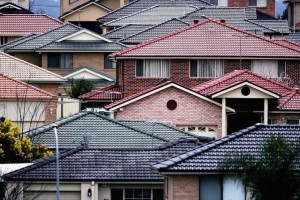New comers to Australia at risk of housing stress
Many immigrants and refugees new to Australia are among those most at risk of housing stress and of finding it difficult to find and keep affordable housing, according to new research.
A study by the Australian Housing and Urban Research Institute (AHURI) found that “younger couples with children and on moderate incomes find it more difficult to maintain affordable housing, and are less likely to escape unaffordable housing circumstances”.
Australian Bureau of Statistics data shows many newcomers to Australia initially at least fall into the category of young couples on moderate incomes with children.
“Family Tax Benefit (FTB) is an important source of assistance for this group of households. The cuts to FTB in the 2014 budget will expose this group to even greater risk of housing affordability stress due to the freeze in indexation arrangements,” the AHURI researchers said.
“We also find that income and hence labour market drivers are primarily responsible for moves out of unaffordable and into affordable housing, suggesting that labour market policies (e.g. training programs, work incentive measures) could prove effective in lifting Australians out of unaffordable housing circumstances provided their success in raising employment participation and hence disposable incomes,” the researchers said.
Titled Housing affordability dynamics: new insights from the last decade, the research used national Household, Income and Labour Dynamics (HILDA) data to analyse experience of temporary and permanent housing affordability stress.
In Australia, housing affordability stress is determined by using a 30/40 rule, meaning those spending more than 30 per cent of their income on housing, while earning in the bottom 40 per cent of the income range are in housing stress.
The report highlighted the vulnerability to housing stress of long-term renters citing a level of welfare protection enjoyed by those able to accumulate savings through home ownership.
It said 73 per cent of Australians in housing stress would escape it inside a year but the rate of escape declines sharply with only a small minority managing to escape housing stress after five years.
“For those enjoying a spell in affordable housing, any threat to their affordable housing situation is small. Furthermore, the danger of sliding out of affordable housing diminishes as periods of time in affordable housing lengthen,” said lead researcher Professor Gavin Wood of RMIT University’s School of Global, Urban and Social Studies.
“If we randomly selected from a sample of spells in affordable housing, there is a high 79.5 per cent chance that housing remains affordable through to Year 10,” he said.
“The young (under 35 years of age) and couples with children are particularly prone to slip out of affordable housing. In contrast, the majority of outright owners’ (75%) ‘survival’ rates in affordable housing after a decade are very high at 94 per cent.
“Most outright owners have reached retirement age, so these findings underpin the traditional welfare role of home ownership as a buffer cushioning living standards in retirement. The past experience of housing affordability stress seems to have a ‘scarring’ effect on future prospects of evading HAS.
“In succeeding spells it appears to be more difficult for low-income individuals to exit unaffordable housing; the first experience in the study timeframe seems to leave an imprint that makes it more difficult to escape in the future,” ProfessorWood said.
Sheree Peterson
AMES Staff Writer













